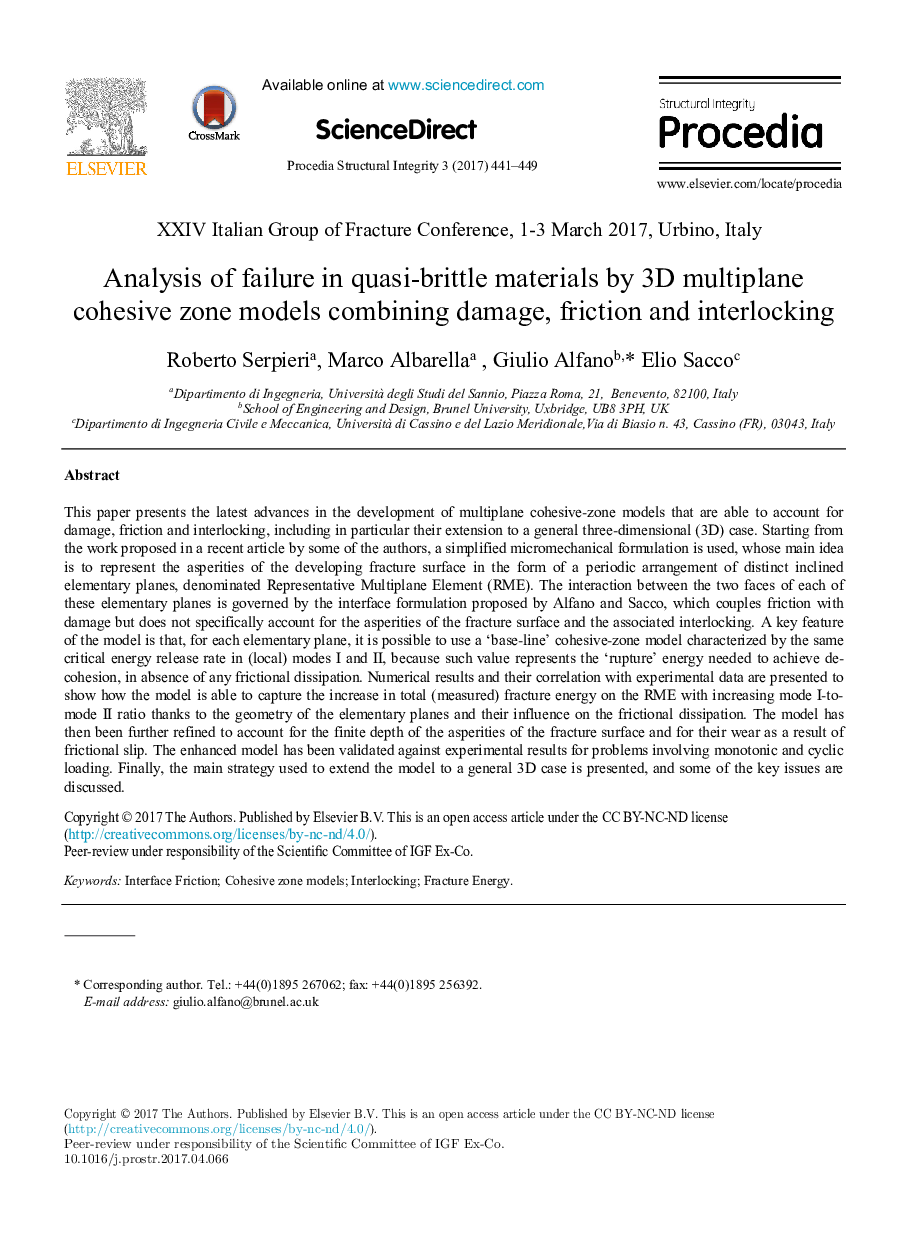| کد مقاله | کد نشریه | سال انتشار | مقاله انگلیسی | نسخه تمام متن |
|---|---|---|---|---|
| 5452755 | 1513784 | 2017 | 9 صفحه PDF | دانلود رایگان |
عنوان انگلیسی مقاله ISI
Analysis of failure in quasi-brittle materials by 3D multiplane cohesive zone models combining damage, friction and interlocking
ترجمه فارسی عنوان
تجزیه و تحلیل شکست در مواد شبه شکننده توسط مدل های چند منطقه ای یکپارچه سه بعدی با ترکیب آسیب، اصطکاک و همپوشانی
دانلود مقاله + سفارش ترجمه
دانلود مقاله ISI انگلیسی
رایگان برای ایرانیان
کلمات کلیدی
اصطکاک رابط مدل های منطقه ای انعطاف پذیر، متصل کردن، شکستگی انرژی،
موضوعات مرتبط
مهندسی و علوم پایه
مهندسی مواد
شیمی مواد
چکیده انگلیسی
This paper presents the latest advances in the development of multiplane cohesive-zone models that are able to account for damage, friction and interlocking, including in particular their extension to a general three-dimensional (3D) case. Starting from the work proposed in a recent article by some of the authors, a simplified micromechanical formulation is used, whose main idea is to represent the asperities of the developing fracture surface in the form of a periodic arrangement of distinct inclined elementary planes, denominated Representative Multiplane Element (RME). The interaction between the two faces of each of these elementary planes is governed by the interface formulation proposed by Alfano and Sacco, which couples friction with damage but does not specifically account for the asperities of the fracture surface and the associated interlocking. A key feature of the model is that, for each elementary plane, it is possible to use a 'base-line' cohesive-zone model characterized by the same critical energy release rate in (local) modes I and II, because such value represents the 'rupture' energy needed to achieve de-cohesion, in absence of any frictional dissipation. Numerical results and their correlation with experimental data are presented to show how the model is able to capture the increase in total (measured) fracture energy on the RME with increasing mode I-to-mode II ratio thanks to the geometry of the elementary planes and their influence on the frictional dissipation. The model has then been further refined to account for the finite depth of the asperities of the fracture surface and for their wear as a result of frictional slip. The enhanced model has been validated against experimental results for problems involving monotonic and cyclic loading. Finally, the main strategy used to extend the model to a general 3D case is presented, and some of the key issues are discussed.
ناشر
Database: Elsevier - ScienceDirect (ساینس دایرکت)
Journal: Procedia Structural Integrity - Volume 3, 2017, Pages 441-449
Journal: Procedia Structural Integrity - Volume 3, 2017, Pages 441-449
نویسندگان
Roberto Serpieri, Marco Albarella, Giulio Alfano, Elio Sacco,
